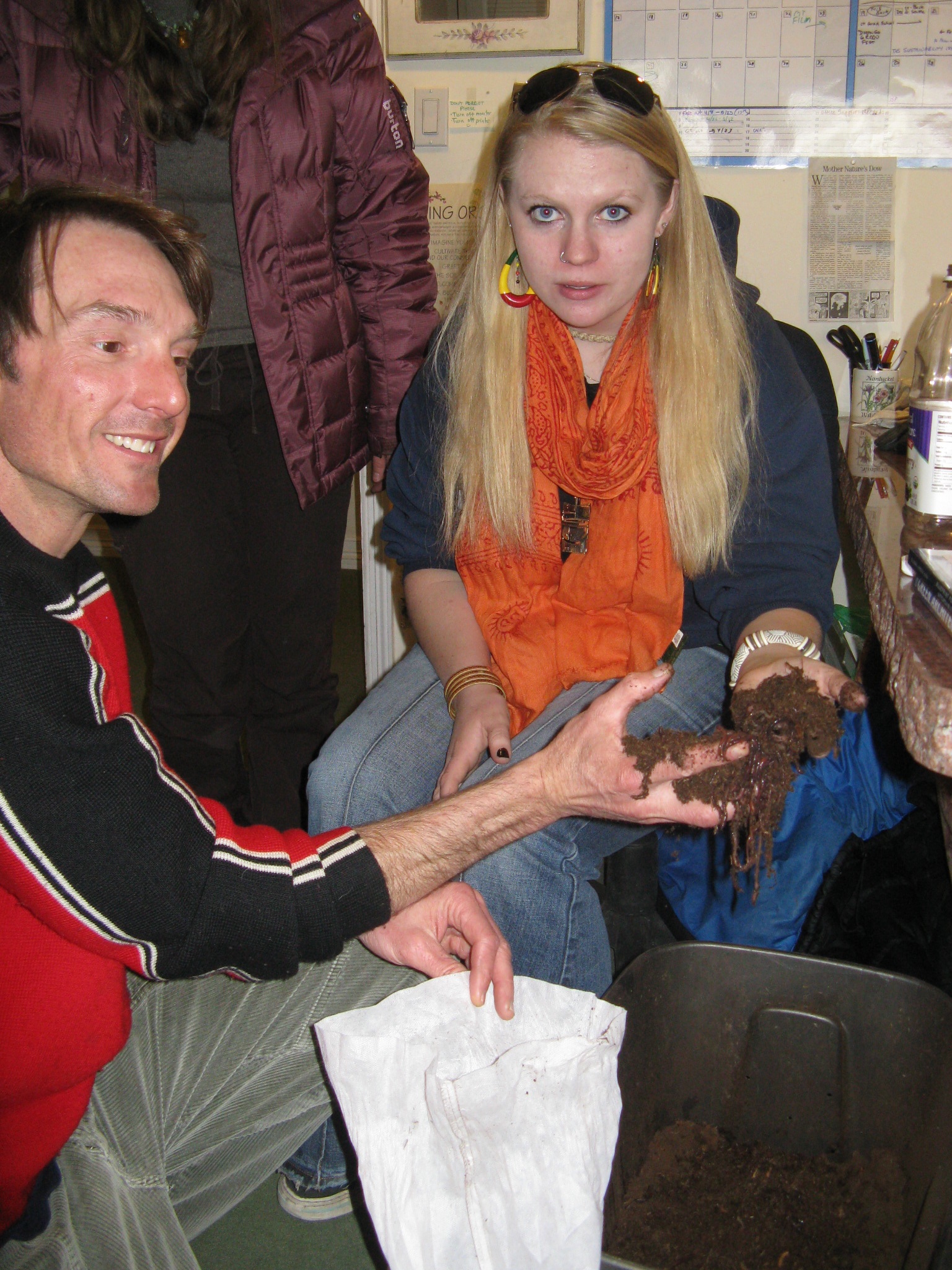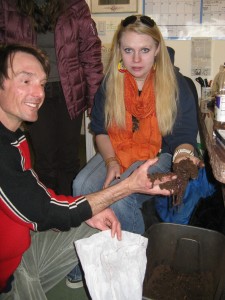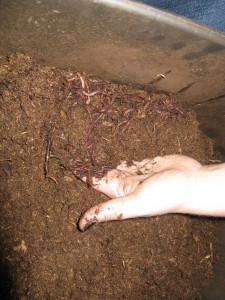
16 Oct ECOACTION PARTNERS: WORMY WAYS
What organism, along with its associated ‘community’ can process its own weight in waste each day – without special equipment, costly buildings and a degree in chemistry? Hints: a pound of them would contain about 1000 individuals, they like the dark, and they’ll be featured in a 9th grade science project in Telluride this week.
Answer: red wiggler worms!
EcoAction Partners will be in Leah Lauritzen’s high school science class this week discussing the wily, wriggly ways of worms and helping students to construct several worm bins to process some of the school cafeteria food waste. Worm bin building is one of our favorite activities. Getting kids from “eeewwww” to “oh” and even “ah” is one of the goals for the class. Last week during community service work the earthworms dug up were a source of screams and shenanigans. This week we’ll employ their cousins, red wigglers, to learn about microbial systems, nutrient cycling – and hopefully develop an appreciation for their role in our natural world.
First the worms, Eisenia fetida, aka red worms or tiger worms, operate in the first foot or two of the soil. They are not what we call earthworms nor are they night crawlers. They are lean, fast and hungry. Their community consists of bacteria, fungi and other microorganisms. Those critters actually break down the organic matter (in our case food scraps) and the worms eat them and what they produce. That’s why if you put a large bit of food scrap like a broccoli stalk in the bin it will eventually be consumed. Not by the worms themselves with their very tiny mouths, but by their even smaller friends who start the process.
In the classroom, we’ll use simple storage bins that we’ve drilled holes in to create the home for the new community. We’ll add shredded newspaper and shredded cardboard that has been soaked in water. Worms like a dark, moist working environment, but they do require oxygen. We’ll add some soil, perhaps some peat moss, get everything to a reasonable moisture level and add worms. The bacterial and fungal allies will be present (though not visible) in the soil we add. Then we’ll add a bit of food scraps. Smaller is better – or at least quicker for the processes to occur. And just like us, it’s important to not try to feed them too much. Although in prime conditions these red wigglers can consume their weight in food each day, we’ll go a bit more conservative and feed them ¼ to ½ their weight per day. That way the colony will establish itself, get happy and start reproducing.
Optimal conditions for worms include the right levels of moisture, light, food and warmth. They like temperatures of 60-70 degrees for reproduction. Maximum growth happens with temperatures around 77 degrees. So an in-home situation for a worm bin can work. Properly managed they work without odors or pests. That said, proper management does take some practice. The most common mistake is trying to make them process too much food at once. Certain foods can slow things down in the bin as well. It’s best to avoid meat, cheeses, citrus peels and oils. To really get things moving quickly, we might have the students blend food scraps before adding.
When the bin gets full of vermicompost or worm castings, the end product of the community effort, it’s time to harvest the nutrient rich material. Since we don’t want to destroy the community, especially our powerhouse worms, we’ll use their natural aversion to light to help us. While covering one part of the bin with cardboard to make a dark place, we’ll shine a bright light on the other side to drive the worms to darkness. Then we can harvest and use the compost to enhance the plant growth in the dome or the students may take some home to feed their own houseplants.
Another way to ‘herd’ the worms is to put their food in one spot, not adding anything to most of the bin. They will naturally gravitate to the salad bar being offered.
Vermicompost is a great way to start composting without some of the bear issues that a regular compost pile can have. Systems are cheap and easy to put together, can live under your kitchen sink – and produce lovely fertilizer for your house plants. For more information, check out vermicompost or ask a local science student!




Sorry, the comment form is closed at this time.